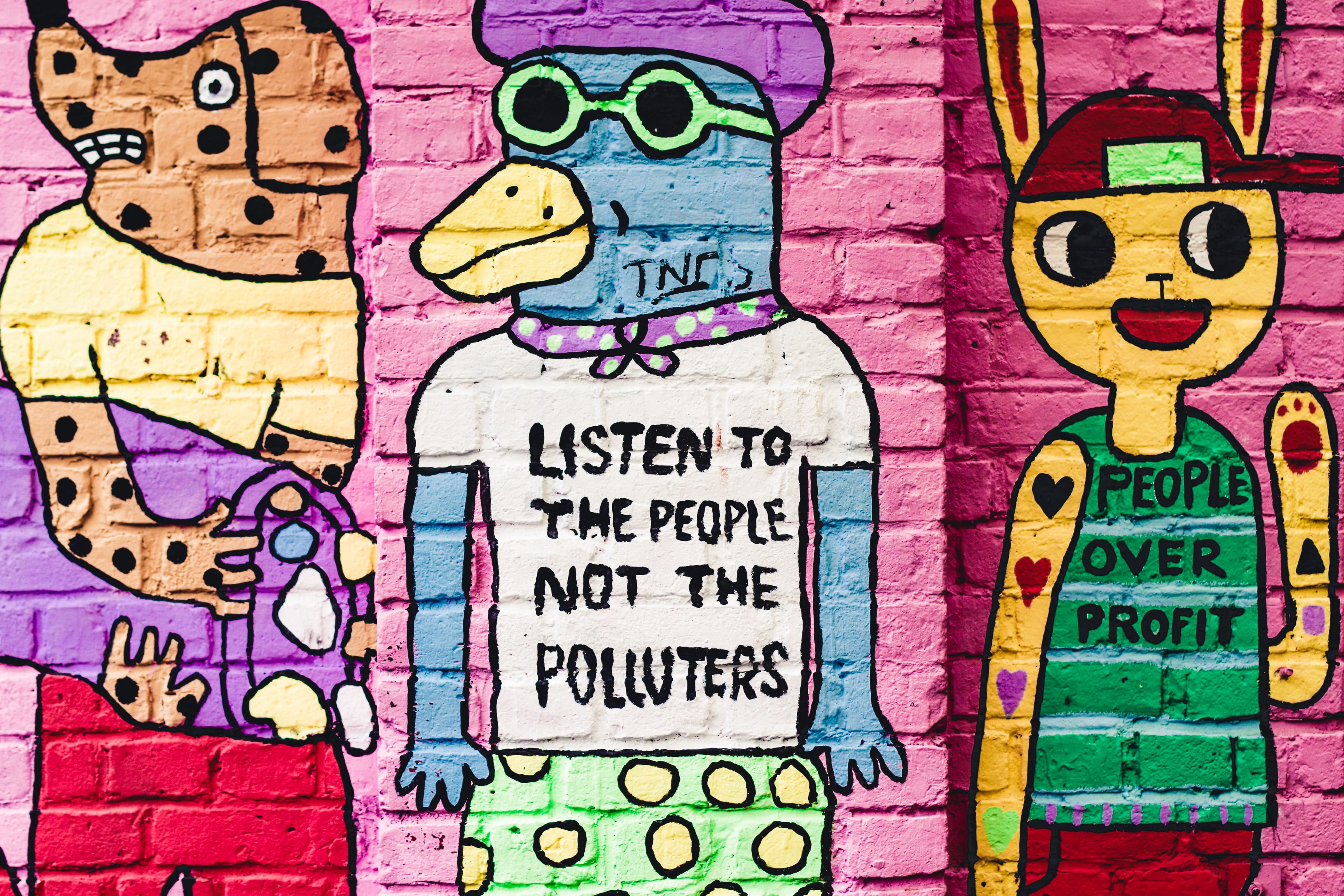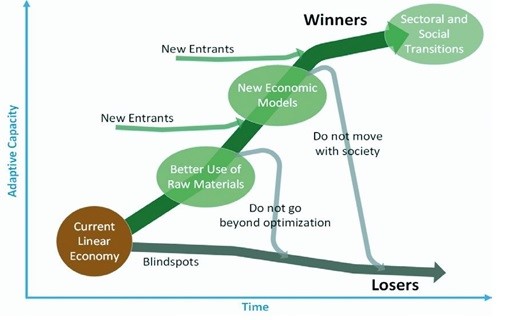MOVECO - The circular economy: business threat or opportunity? (Part I)
25-03-2020
In recent years, we have witnessed a rising number of initiatives promoting a circular economy. Several of them have gathered stakeholders representing the public sector, academia, companies, and NGOs, declaring voluntary commitments to take action towards a circular economy.
Initiatives at the national level have also been launched in the Danube region. The Slovenian Circular Change, a private non-profit organisation with a strong international network, offers a range of services to design for its partners their own unique circular transitions.[1] Working with small and large companies, government agencies, cities, non-profits, researchers, creatives and the media in collaborative projects, the Circular Change co-creates circular economy solutions, projects, reports, events and more.
In 2018, the Circular Economy Platform was established in Hungary as an initiative of the Business Council for Sustainable Development in Hungary (BCSDH), the Embassy of the Kingdom of the Netherlands, and the Ministry of Innovation and Technology. With the aim of building a community of forward-thinking change leaders and sharing business solutions that make a real impact, a Memorandum of Understanding was signed by more than 70 signatories.[2]
Similarly, inspired by the good practice presented by the Holland Circular Platform, Slovakia has established a Circular Slovakia platform, a public-private partnership consisting of 7 founding organizations signing a Memorandum of Understanding and aiming to support the transition towards a circular economy in that country.[3]
Despite all of these actions, change is happening slowly. There might be several reasons for this, but part of the uncomfortable truth is that business growth has for decades relied on selling more goods to more people (Putt del Pino et al, 2017).
On one hand, population growth and the rising middle class mean that more people are able to afford more goods and improve their quality of life. This is a golden market opportunity for businesses to provide more products and services to meet the needs of their customers.

(C) ev/Unsplash
On the other hand, increasing consumption results in rising demand for resources, resulting in serious implications for environmental, human and economic sustainability.
Sustainability challenge
Trends such as climate change, material and resource scarcity, and ecosystem decline in combination with population growth, the rising middle class and urbanization have been and will continue significantly changing the global business environment (KPMG 2012).
According to the authors of the working paper “The Elephant in the Boardroom: Why Unchecked Consumption Is Not an Option in Tomorrow´s Markets”: “As the global population grows and prosperity increases, 3 billion people are projected to join the global middle class in the next 15 years (Kharas, 2010). Growth in this major consumer class provides an unprecedented opportunity for business. However, rapid global economic growth is also placing extraordinary stress on the planet’s resources. Research by the United Nations International Resource Panel suggests that resource use could triple by 2050 compared to a 2000 baseline (Fischer-Kowalski et al. 2011), but according to the Stockholm Resilience Centre, many environmental limits have already been exceeded at the planetary scale.” [4]
Thus, it is becoming obvious that the current linear business models (based on the take-make-use-dispose approach) are not sustainable and that changing the ways that we design, produce, use, and dispose of waste is inevitable.
In other words, future business success should disconnect business growth from increasing resource use and environmental impact: “Businesses that do so will be there to serve their customers and their shareholders. Those that do not will be outcompeted by disruptive new entrants that are more innovative and transformational” (Putt del Pino et al., 2017).

Source: Drift, Erasmus University
The circular challenge
There are plenty of examples of companies implementing circular strategies. Oftentimes, organizations are driven by a combination of factors. Whereas one organization is guided by a social or ecological necessity, another is guided by opportunities for circular innovation.
In the past, many organizations saw sustainability as a burden and a cost, or as a necessary evil required to guarantee legitimacy and continue the business (Holiday, 2003).
However, consumers, businesses and governments are becoming more aware of the environmental impacts of the products they use, which is reflected in their decision making.
Sustainability - and specifically the circular economy - is increasingly being seen as a business opportunity; reducing costs and risks on the hand while increasing returns and market share on the other.
A circular economy, however, will also require a new mindset.
Using the words of Freek Van EIJK, director of the Holland Circular Hotspot: “What do you see when you look at an orange peel? Do you see waste? Or can you see it as a biofuel, food, perfume or breathable fabric?”

(C) Kaitlyn Chow/Unsplash
“Waste and pollution are not accidents, but the consequences of decisions made at the design stage, where around 80% of environmental impacts are determined.”[5]
Efforts to maintain the value of resources, materials, components and products may result in a shift in the focus of a company’s operations from quantity (selling as many products as possible) to quality (creating value for customers).
Oftentimes, this goes hand in hand with changing the business model. For example, it might be necessary for a company to maintain the ownership of a product to be able to remanufacture it when it is no longer in use, which can achieved by renting or leasing products instead of selling them.

Source: Circle Economy
However, changing a business model is a long-term learning process. What strategies can companies implement to successfully move towards a circular economy? Continue to Part 2 and learn more about specific business models as well as first steps you can take.
Credit Title Picture: Hunters Race/Unsplash
[1] For more information visit: https://www.circularchange.com/services
[2] For more information visit: https://bcsdh.hu/projects/circular-economy-platform/
[3] For more information visit: http://zelene-hospodarstvo.enviroportal.sk/en/circular-slovakia
[4] Samantha Putt del Pino, Eliot Metzger, Deborah Drew, Kevin Moss (World Resources Institute): The elephant in the boardroom: Why unchecked consumption is not an option in tomorrow’s markets; https://www.wri.org/publication/elephant-in-the-boardroom
[5] For more information visit https://www.ellenmacarthurfoundation.org/circular-economy/what-is-the-circular-economy
